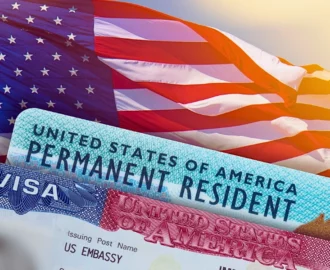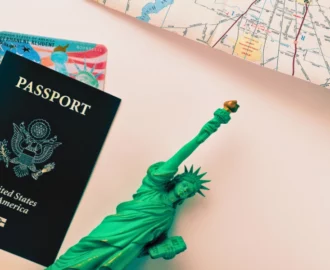Over the years, the Immigration and Nationality Act (INA) has served as the main immigration statute that Congress enacts at the federal level. This statute has evolved in many ways. Various changes have affected the INA since its introduction, but it remains the basic body of immigration law in use today.
What Is the Immigration and Nationality Act?
Congress enacts almost all immigration statutes, one of which is the INA, which started in 1952. Before the INA, several statutes were behind immigration law in the U.S. but were not centralized in a single statute. Through the McCarran-Walter bill of 1952, also known as Public Law No. 82-414, existing provisions were codified and collected, ultimately helping to restructure immigration law.
The INA consists of various titles, chapters, and sections. The act is a standalone body of law, but it also appears in the United States Code (U.S.C.) as Title 8, which refers to “Aliens and Nationality” among 50 other titles. When looking in the INA along with other statutes, individuals are likely to see references to Title 8.
There have been several amendments to the act since 1952 as it’s evolved, which involved adding or changing specific wording within sections as opposed to rewriting the law or entire sections of it. In amending the INA, lawmakers created Operation Instructions (IOs) and Interpretations to help clarify the statute and regulations’ provisions.
Immigration Before the INA
1790 saw the first law to determine who could become a citizen of the United States. At the time, this was limited to free white citizens who exemplified “good moral character” and had lived in the U.S. for a minimum of two years. By 1870, this law had extended to the African-American population.
Beginning in 1875, certain restrictions developed around immigration, including various bans on people with contagious diseases, criminals, anarchists, importers of prostitutes, polygamists, and beggars. Eventually, restrictions on Asian immigrants arose, starting with limited migration from China and leading to bans on immigrants from a majority of Asian nations.
At the beginning of the 20th century, the nation’s influx of immigrants began to shift from northern and western Europe to southern and eastern Europe. As a result, new laws came along in 1921 and 1924 in an attempt to push a return to immigration from northern and western European countries. These laws aimed to achieve this by putting into place a cap on the total number of immigrants permitted entry into the country every year, along with specific quotas according to European nationality.
How the INA Began
Immigration restrictions started to falter around 1943 after Chinese immigrants were allowed to enter the country in limited numbers. By 1952 with the introduction of the INA, a person’s race was beginning to become less of a factor contributing to exclusion for immigrants. In 1952, the act may have created opportunities for Asian immigrants that were symbolic in nature, but Asian immigrants still saw certain restrictions that discriminated against them.
While each Asian country was allowed 100 visas every year and Asian immigrants were allowed to undergo nationalization, there were still restrictions based on race as opposed to nationality. Anyone with one or more Asian parents counted toward the quota of his or her parent’s nationality, even if the immigrant was a citizen of another nation.
Then in 1965, the INA officially established a system that favored skilled immigrants and family reunification, effectively rendering country quotas obsolete. Additionally, new restrictions were introduced for immigrants coming in from the Western Hemisphere, which led to a higher number of Asian and Latin American immigrants compared to European immigrants.
Focusing on Refugees
Following the changes that the INA brought, more U.S. laws have come along to focus on refugees. This began with granting entry for Indochinese refugees seeking asylum in the 1970s and would eventually extend to Haitian, Nicaraguan, and Chinese refugees.
In 1990, a new law introduced “temporary protective status,” which has helped protect immigrants from Central American and other nations from deportation to nations experiencing certain conflicts, natural disasters, and other harmful conditions.
In 2012, President Obama broke a pattern of immigration laws focused on border control throughout the ’90s and ’00s when he introduced the Deferred Action for Childhood Arrivals (DACA). This program aimed to allow young immigrants, or Dreamers, who had come into the country illegally to seek relief from deportation, allowing them to legally work in the country.
As more changes to immigration laws continue to take place, the INA remains one of the biggest influences in today’s immigration policies. Since its introduction in 1952, the nation saw a gradual shift away from policies built around race and an increased movement toward family reunification and attracting skilled immigrants.




